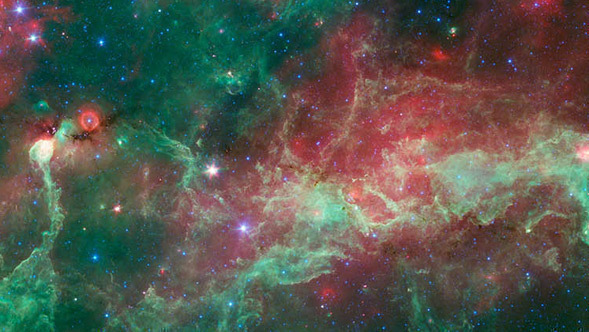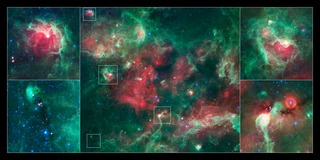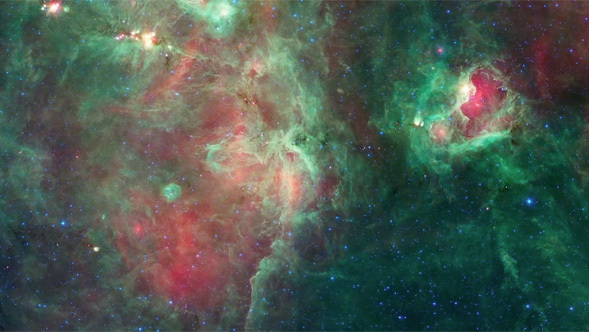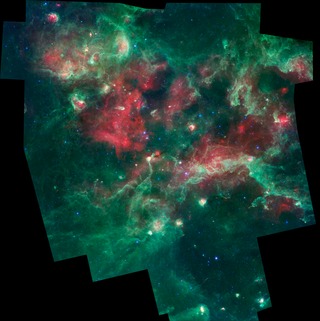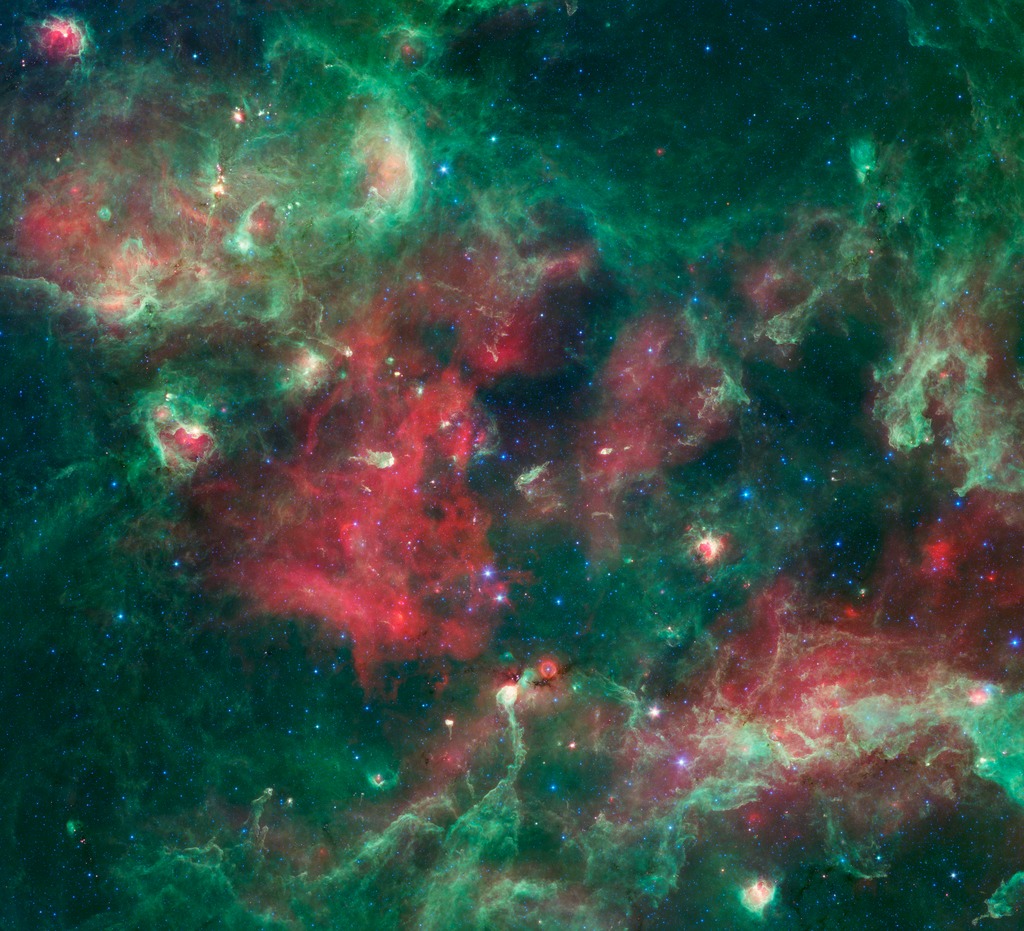
Credit: NASA/JPL-Caltech/Harvard-Smithsonian CfA
Observation • January 10th, 2012 • ssc2012-02a
ssc2012-02a
A bubbling cauldron of star birth is highlighted in this new image from NASA's Spitzer Space Telescope. Infrared light that we can't see with our eyes has been color-coded, such that the shortest wavelengths are shown in blue and the longest in red. The middle wavelength range is green.
Massive stars have blown bubbles, or cavities, in the dust and gas -- a violent process that triggers both the death and birth of stars. The brightest, yellow-white regions are warm centers of star formation. The green shows tendrils of dust, and red indicates other types of dust that may be cooler, in addition to ionized gas from nearby massive stars.
Cygnus X is about 4,500 light-years away in the constellation Cygnus, or the Swan.
Blue represents light at 3.6 microns: 4.5-micron light is blue-green; 8.0-micron light is green; and 24-micron light is red. These data were taken before the Spitzer mission ran out of its coolant in 2009, and began its "warm" mission.
About the Object
- Name
- Cygnus X • DR21 • W75N • AFGL 2591 • AFGL 2636 • S106 • DR22 • DR23 • DR20 • DR15 • DR9 • DR7 • S105 • AFGL 2620 • LDN 896 • Cyg OB2 • Cyg OB9 • G79.29+0.46 • HBHA 4202-22 • BD+43 3710
- Type
- Nebula > Type > Interstellar Medium
- Nebula > Type > Star Formation
- Nebula > Appearance > Dark
- Star > Evolutionary Stage > Protostar
- Star > Spectral Type > O
- Star > Spectral Type > B
- Star > Type > Carbon
- Star > Type > Wolf-Rayet
- Distance
- 4,700 Light Years
Color Mapping
| Band | Wavelength | Telescope |
| Infrared | 3.6 µm | Spitzer IRAC |
| Infrared | 4.5 µm | Spitzer IRAC |
| Infrared | 8.0 µm | Spitzer IRAC |
| Infrared | 24.0 µm | Spitzer MIPS |
Astrometrics
- Position ()
- RA =20h 32m 0.0s
- Dec = 40° 30' 0.0"
- Field of View
- 4.2 x 3.8 degrees
- Orientation
- North is up
